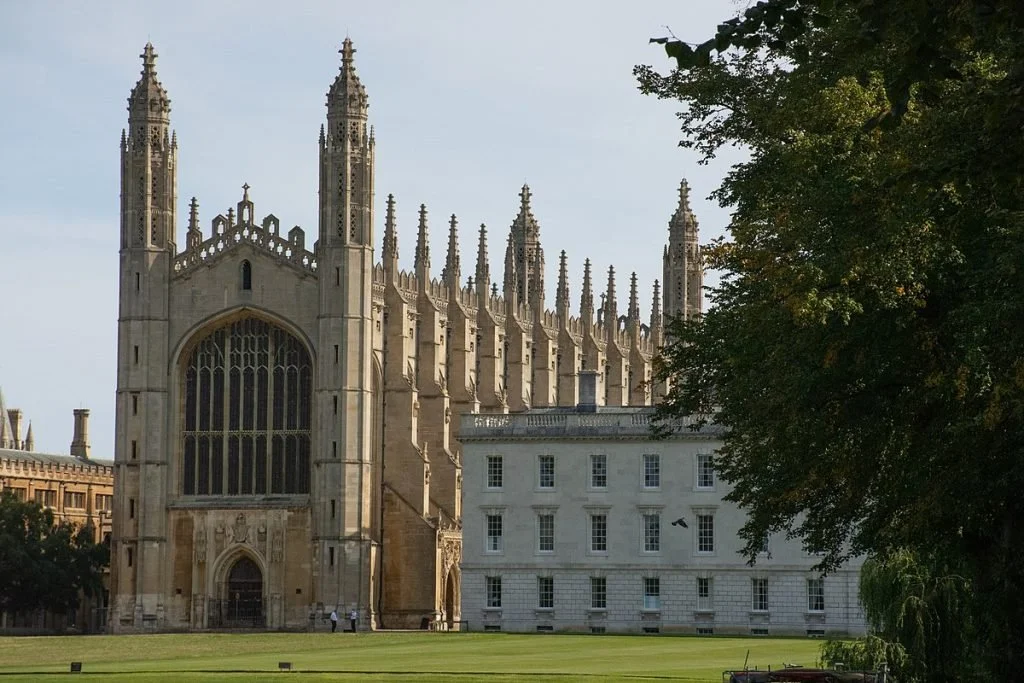King's College, Cambridge
Scott’s first college work came in 1860 when he carried out repairs to King’s College Chapel. This is certainly the finest building in Cambridge. It is an enormous Perpendicular structure, almost one hundred yards long and one hundred feet tall and it was started by King Henry VI in 1446, although not completed until 1515. On 10 September 1860 the authorities of King’s College decided to seek ‘the advice of a competent architect upon the state of the Chapel roof’ and Scott’s reputation as a safe pair of hands ensured that this most important building would be entrusted to him. He produced a report the following month and work commenced in the spring of 1861. Leadwork and timber was replaced in the roof, iron tie-rods inserted and it was completed at the end of 1863 at a cost of £2,715. George Gilbert junior helped his father with the work and made a study of the chapel vaulting which he discussed in his book published in 1881.
Scott’s last building in Cambridge was a new set of rooms for King’s College. In 1870, the college bought a house at the south end of its King’s Parade frontage and Scott was commissioned to extend the frontage as far as King’s Lane. This is three stories high, stone-faced, with a projecting turret on the corner with King’s Lane and is capped by a version of the crown over the stair turret at Hillesden which he had already reproduced at Bath Abbey. Scott’s plans, for what became known as the Chetwynd Building, were approved in 1871, the contract let in August and the work completed in 1873 at a cost of £6,000. His gothic style building carries on the gable end of the Wilkins Building and as Pevsner said, ‘The skill displayed in this will, one day, be appreciated’. In 1877 Scott produced an ornate design to replace the great open screen which forms the frontage of King’s College onto the King’s Parade, with ponderous ranges on either side of a central gatehouse. This was submitted in a limited competition with Street and Burges. Waterhouse was also invited but did not submit, and although Street’s design was selected it was fortunately decided to abandon the scheme which would have ruined the setting of the famous chapel.
Scott carried out further repairs to the chapel, particularly in 1875 when he painstakingly restored the western portal and repaired pinnacles and battlements. But as with Hillesden and other fine Perpendicular buildings, his touch was so gentle that it is almost imperceptible.

